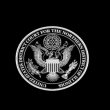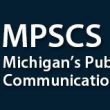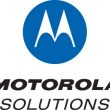Unrequited love
Terrestrial Trunked Radio, the digital trunked mobile radio standard developed by the European Telecommunications Standards Institute, or ETSI, has now made its home in 105 countries around the world. TETRA boasts some 2000 deployments — half in public safety and the rest in industries such as utilities and transportation, as well as military. But there is one place where the standard is noticeably absent — the U.S. — and industrial users, particularly utilities and petroleum and natural gas companies, are leading the push to change this fact.
It's with good reason that trunked radio users have an interest in TETRA. Vast deployments of compliant systems have resulted in a number of vendors flocking to the space. The competition in turn has brought down the price of network equipment and terminals, which by some estimates cost one-third less than existing Project 25 digital radios used today by the U.S. public-safety community.
More than 15 years ago, U.S. governmental and standards organizations had a choice of technologies. They could choose TETRA or adopt P25 as the interoperable digital radio system for the public-safety community. Ultimately, they chose P25 because it better suited the needs of the U.S. market, and it became a Telecommunications Industry Association (TIA) standard. TETRA, however, has enjoyed better economies of scale, primarily because it has been deployed in a manner different from P25, noted Jeff Orr, analyst with wireless industry research firm ABI Research.
“TETRA is not exclusive for public safety, but P25 is,” Orr said. “TETRA is more like a cellular network and managed to create a blanket of networks, while P25 took a much more concentrated approach.”
TETRA's deployment strategy, however, now means that the U.S. is the only place where TETRA doesn't exist. Even P25-friendly countries, such as Australia, are engaged in TETRA trials, Orr said.
Despite the fact that U.S. trunked radio users have lamented the lack of the technology's presence in North America over the years, little progress has been made to get TETRA across the Atlantic. The technology's biggest obstacle concerns licensing issues. In particular, Motorola — TETRA's largest holder of intellectual property — won't license its use in North America at this point.
“There just aren't a lot of choices for us when it comes to technology other than P25, which is of no interest to us,” said Jill Lyon, vice president and general counsel for the Utility Telecommunications Council (UTC), a trade association that represents more than 500 utility companies in the U.S. “We keep looking to TETRA, but we can't have it. And being Americans, that ticks us off,” she added.
Bill Fredrickson, senior vice president of the global utility sector for Tait Radio Communications, hears the same story. “There are a number of people in North America who are, in my opinion, frustrated that the options they have for technology are either P25, which is oriented to public safety, or proprietary technology from Motorola and Tyco,” he said. “They see this wonderful TETRA technology and say, ‘Why isn't it available over here?'”
Phil Kidner, chief executive officer of the TETRA Association, said the only factor keeping TETRA out of the U.S. is licensing issues. “There is no reason why TETRA can't be adopted by any sector in the U.S.,” he said. “I just want a situation where [end users] can make a choice. They currently have no choice.”
Motorola has said it would license its TETRA patents in the U.S. only if the TIA — which adopted P25 more than a decade ago as a trunked radio standard — adopts the standard. Becoming a TIA standard would show Motorola that significant demand for TETRA does indeed exist in the U.S.
“Previously, Motorola has gone on record and stated that it will license its TETRA [intellectual property rights] in the U.S. after it becomes a TIA/U.S. standard, and will do so in a fair and reasonable manner according to the policies set forth by the TIA/U.S. organization,” Motorola said in a statement prepared for Urgent Communications. The company has declined to comment beyond that.
However, many in the industry say TETRA will never become a TIA standard because doing so would be a redundant exercise, as TETRA already is a mature ETSI standard. It should be noted that ETSI standards aren't barred from the U.S. For instance, both GSM and WCDMA are ETSI standards that are used heavily in the U.S.
Nevertheless, the TETRA Association last year created a new North America Working Group responsible for “identifying the processes and working with the appropriate organizations required to facilitate the availability of TETRA technology in the United States,” according to the association. The association did so in response to inquires about the technology from the UTC and the American Petroleum Institute (API), which represents 400 companies involved in the petroleum and natural gas institutes.
Kidner said the TETRA Association is looking to deploy pilot networks in North America this year with unnamed entities that aren't in the public-safety community. Naturally, the assumption is that the trial networks would be conducted with a utility or petroleum company. And this month, Kidner, Lyon and other technology influencers will be talking about the potential for TETRA in the U.S. during the IWCE conference in Las Vegas.
Lyon said the issue is becoming more important for utility companies, as the sector as a whole moves toward smart grids and interconnected data networks. “We want to have something that's digital, an open standard, has many manufacturers and that can lead to interoperability,” she said.
Despite the fact that UTC and API represent hundreds of companies, they still don't have the economic power to pressure Motorola to change its TETRA licensing position, Lyon said.
“We want to buy TETRA, but you only make a purchase every 10 years or so. We can't go buy something else to give the message to Motorola that we want TETRA,” Lyon said. “Since it's difficult to make an economic impact to make a difference, you have to overcome the patents in some [other] way.”
She noted that the protections around the key patents Motorola owns for TETRA are expected to lift in a few more years, which would allow vendors to begin targeting the U.S. market. Lyon also said others are looking into laws currently on the books that allow government agencies to overcome private patent restrictions. The UTC, she said, is not involved in that effort.
While many in the industry allege that Motorola is protecting its valuable P25 business in the U.S. by keeping TETRA competition out of that market, Motorola is in fact the world's largest TETRA vendor. Indeed, it boasts the largest TETRA deployment in the world in the U.K. — a deployment that supports some 250,000 users — and likely would get the lion's share of any such deployments in the U.S. But bringing TETRA to the U.S. is not a simple process. Technical challenges exist, and many question just how inexpensive the technology would be in particular deployments.
As such, Craig Jorgensen, P25 project director for APCO, defends Motorola's position. “It doesn't make sense for them to block this because of control since they sell most of the products in Europe anyway. They are responding to what the American marketplace needs,” he said. “I'm sure if enough users demonstrate that they really need it, the Motorolas of the world would respond to it accordingly.”
Indeed, the bulk of trunked radio customers that Motorola and other vendors serve are public-safety agencies that are now far enough ahead with rollouts of P25 that an introduction of TETRA could derail the goal of interoperable systems.
“Let's face it, the European Union has been very careful not to allow the expansion of P25 in Europe, and there's nothing wrong with that since they want interoperability. But on the same token, we want interoperability,” Jorgensen said. “To spend a lot of money and resources to promote technology that is not going to be interoperable doesn't make sense. That is the world we live in.” He added that “individuals and agencies have the right to look into it. That's between the consumer and the supplier.”
Moreover, it is likely the TETRA standard would need to be altered to make it fit within the band plans and regulatory environment of the U.S. One fundamental problem is that TETRA operates on 25 KHz channels. While that channel allocation is adequate to operate in the 800 MHz band, TETRA would have problems at 900 MHz and in the VHF and UHF bands once the FCC's narrowband deadline hits in 2013, Tait's Fredrickson said.
“Nothing says they can't go and do a derivative of the technology that operates on 12.5 [KHz channels],” Fredrickson said. “It's doable, but it hasn't been done yet.”
Additionally, engineers say TETRA may not work well in the U.S. because the standard originally was designed to fit within green-space spectrum — frequencies that have no other applications running on them. The frequencies set aside for trunked radio in the U.S. are fraught with interference, which may require changes in spectrum allocations. However, Kidner said he doesn't believe interference would be a significant problem as TETRA has been deployed around the world in different spectrum scenarios.
Finally, while TETRA radios are significantly cheaper than P25 radios, the network systems may not be cheaper than P25 networks. TETRA systems typically require more repeater stations and higher upfront costs, Jorgensen said.
Fredrickson agreed. “The amount of coverage that you get from a TETRA base station is about one-half to one-third that you get from a conventional two-way radio system that we use over here, so what happens is you need a lot more sites,” he said.
In November, the National Public-Safety Telecommunications Council (NPSTC) board members voted to proceed with an effort to provide a written comparison of P25 and TETRA radio systems to educate users on the differences between the technologies. NPSTC agreed to provide a format for the comparison, but the organization said it lacked the resources to conduct it and asked for help from the TETRA Association and the P25 Steering Committee. But neither group wants to pay for such a comparison.
Ultimately, P25 and TETRA advocates would like to see some degree of commonality and interoperability between the two standards, resulting in better economies of scale, but the standards are significantly different at this point, Jorgensen said.
“The time isn't right yet,” Jorgensen said. “The technologies are so far apart. We're close on some foundational issues and quite a ways apart on some others. It's not that it isn't possible, but [it would require] a great deal of change.”
Commonality between the two camps may come through Project MESA, which was launched nearly eight years ago as a collaborative effort between TIA and ETSI to identify and create common specifications for a next-generation public-safety network. The group still hopes to hammer out a specification that can be agreed to on both sides of the Atlantic.
Donny Jackson contributed to this article.
TETRA VERSUS PROJECT 25
| TETRA | Project 25 | ||
|---|---|---|---|
| Open standards by ETSI | Open standards by TIA | ||
| General characteristics | General characteristics | ||
| • For many end-user types | • For U.S. public-safety users | ||
| • Can handle high-traffic loads | • For few users in wide areas | ||
| • Native trunking operation | • Optimized for non-trunking | ||
| • Supports basic and complex services | • Trunking as an option | ||
| Global market through many sectors | Market is basically U.S. public safety | ||
Source: TETRA Association
















